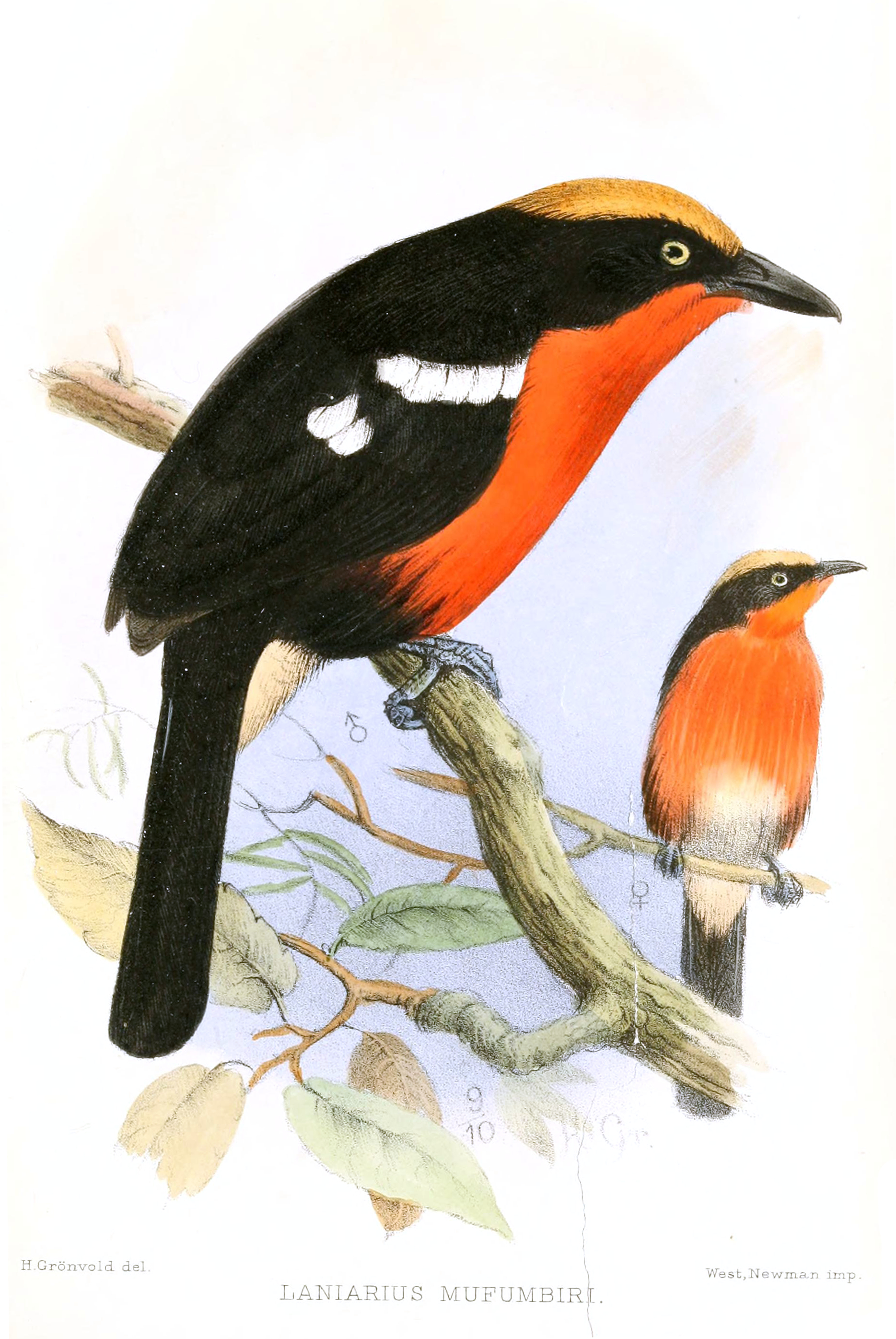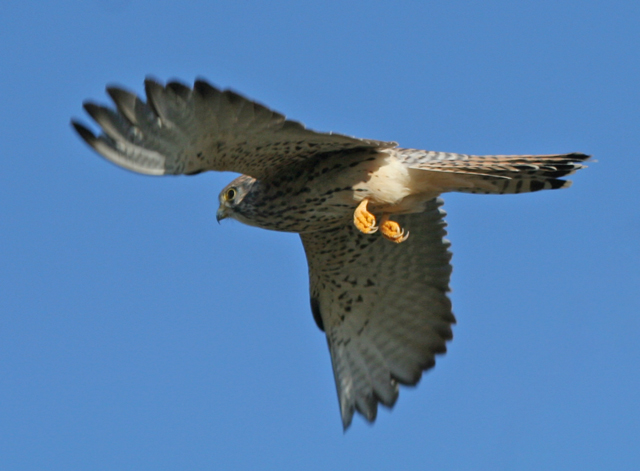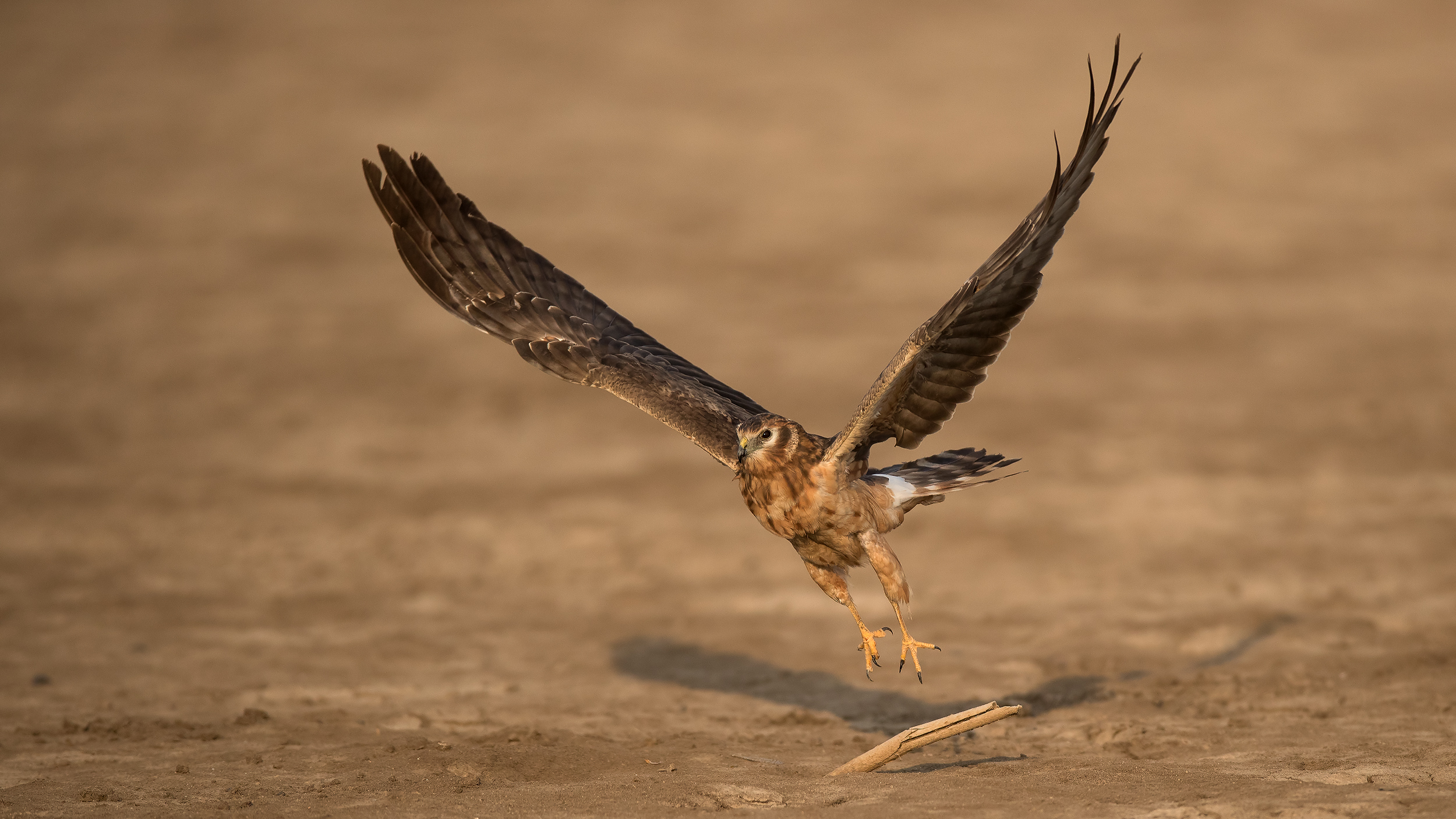|
Kanyaru River
The Akanyaru River is the main tributary of the Nyabarongo River. It rises in the western highlands of Rwanda and Burundi, flows east and then north along the border between those countries before joining the Nyabarongo River. The lower stretches contain important but unprotected wetlands, which are under threat from human activity. Course The Mugere River, a major headwater, rises at an elevation of in Burundi. The river has sources at about elevation in the south of Rwanda. Many of the valleys of the higher tributaries are choked by papyrus, which contains seasonal swamp forests. The upstream portion of the river has a catchment area of about . The lower course of the river is a belt of permanent wetlands about wide that ends where it reaches the Nyabarongo River. In this stretch the river drops from an elevation of to . The swamp belt is fed from the right by lakes Cyohoha North and Cyohoha South. The Burundi side of the swamp belt has about of permanent swamp along a ... [...More Info...] [...Related Items...] OR: [Wikipedia] [Google] [Baidu] |
Burundi
Burundi (, ), officially the Republic of Burundi ( rn, Repuburika y’Uburundi ; Swahili language, Swahili: ''Jamuhuri ya Burundi''; French language, French: ''République du Burundi'' ), is a landlocked country in the Great Rift Valley at the junction between the African Great Lakes region and East Africa. It is bordered by Rwanda to the north, Tanzania to the east and southeast, and the Democratic Republic of the Congo to the west; Lake Tanganyika lies along its southwestern border. The capital cities are Gitega and Bujumbura, the latter being the country's largest city. The Great Lakes Twa, Twa, Hutu and Tutsi peoples have lived in Burundi for at least 500 years. For more than 200 of those years, Burundi was an independent Kingdom of Burundi, kingdom, until the beginning of the 20th century, when it became a German colony. After the First World War and German Revolution of 1918–19, Germany's defeat, the League of Nations "mandated" the territory to Belgium. After the Secon ... [...More Info...] [...Related Items...] OR: [Wikipedia] [Google] [Baidu] |
Bridelia Micrantha
''Bridelia micrantha'', the mitzeeri or the coastal golden-leaf, is a tree in the family Phyllanthaceae and is native to tropical and southern Africa as well as to the island of Réunion in the Indian Ocean. Description A medium to tall tree (up to 20 m),Pooley, E. (1993). ''The Complete Field Guide to Trees of Natal, Zululand and Transkei''. . with a dense widely spreading crown. The leaves are large, alternate and simple. The tree may be deciduous or evergreen. Habitat They are found growing in coastal forests (such as KwaZulu-Natal Coastal Lowland Forest), riverine forest, swamp forest, woodland and along forest margins. Native distribution ''Bridelia micrantha'' is native to primarily tropical, northeast, western, west-central, and southern Africa (in Angola; Benin; Burkina Faso; Cameroon; Central African Republic; Côte d'Ivoire; Equatorial Guinea; the Democratic Republic of the Congo; Ethiopia; Gabon; Gambia; Ghana; Guinea; Kenya; Liberia; Malawi; Mali; Mozambique; Niger ... [...More Info...] [...Related Items...] OR: [Wikipedia] [Google] [Baidu] |
Butare
Butare (), also known as Huye, is a city (population: 50,220 as of 2012) in the Southern Province of Rwanda and the capital of Huye district. It is the fourth largest town in Rwanda by population. History The Belgian colonial rulers established it in the 1920s and named the city ''Astrida'', in honor of Queen Astrid of Belgium, The government of Rwanda changed the name of the city when it gained independence in 1962. Education The University of Rwanda Butare campus was founded in 2013. Before that, the Butare campus went by the name of National University of Rwanda subsequent its foundation in 1963. Due to the large number of university students and student-centered activities in the city, Butare is often regarded as a university city. It also held the Nyakibanda Seminary and the Rwandan National Institute of Scientific Research. The city of Butare has long been regarded as the intellectual capital of the country, while Kigali holds most political power. The Groupe Scolaire ... [...More Info...] [...Related Items...] OR: [Wikipedia] [Google] [Baidu] |
Sitatunga
The sitatunga or marshbuck (''Tragelaphus spekii'') is a swamp-dwelling antelope found throughout central Africa, centering on the Democratic Republic of the Congo, the Republic of the Congo, Cameroon, parts of Southern Sudan, Equatorial Guinea, Burundi, Ghana, Botswana, Rwanda, Zambia, Gabon, the Central African Republic, Tanzania, Uganda and Kenya. The sitatunga is confined to swampy and marshy habitats. Here they occur in tall and dense vegetation as well as seasonal swamps, marshy clearings in forests, riparian thickets and mangrove swamps. Taxonomy and genetics The scientific name of the sitatunga is ''Tragelaphus spekii''. The species was first described by the English explorer John Hanning Speke in 1863. Speke first observed the sitatunga at a lake named "Little Windermere" (now Lake Lwelo, located in Kagera, Tanzania). In his book ''Journal of the Discovery of the Source of the Nile'', Speke called the animal "nzoé" (Kiswahili name for the animal) or "water-boc" (du ... [...More Info...] [...Related Items...] OR: [Wikipedia] [Google] [Baidu] |
Papyrus Yellow Warbler
The papyrus yellow warbler, papyrus flycatcher-warbler or thin-billed flycatcher-warbler (''Calamonastides gracilirostris'') is a species of tree warbler; formerly, these were placed in the paraphyletic "Old World warblers". It is monotypic in its genus. It is found in Burundi, Democratic Republic of the Congo, Kenya, Rwanda, Tanzania, Uganda, and Zambia. Its natural habitat is swamps. It is threatened by habitat loss Habitat destruction (also termed habitat loss and habitat reduction) is the process by which a natural habitat becomes incapable of supporting its native species. The organisms that previously inhabited the site are displaced or dead, thereby .... Description Compared with the dull browns and greys typical of swamp-dwelling warblers, this warbler is brightly coloured. It shows an underbelly of rich yellow and olive-brown upper parts. Its song consists of melodious liquid warbling. References * BirdLife International 2006.Chloropeta gracilirostris 2006 IUCN R ... [...More Info...] [...Related Items...] OR: [Wikipedia] [Google] [Baidu] |
Papyrus Gonolek
The papyrus gonolek (''Laniarius mufumbiri'') is a species of bird in the family Malaconotidae. It is found in Burundi, Democratic Republic of the Congo, Kenya, Rwanda, Tanzania, and Uganda. It has specialised habitat requirements, being restricted to papyrus swamp A swamp is a forested wetland.Keddy, P.A. 2010. Wetland Ecology: Principles and Conservation (2nd edition). Cambridge University Press, Cambridge, UK. 497 p. Swamps are considered to be transition zones because both land and water play a role in ...s. Not yet a threatened species, it has become rare due to habitat loss and pollution. Description The papyrus gonolek is a medium-sized bush-shrike some long. The sexes are similar; the crown is dull yellow, the head, upper parts, wings and tail are black apart from a broad white bar on the wings. The breast and upper belly are vivid orange-crimson, and the lower belly whitish. Ecology This species is difficult to observe and has been little studied. It occ ... [...More Info...] [...Related Items...] OR: [Wikipedia] [Google] [Baidu] |
Lesser Kestrel
The lesser kestrel (''Falco naumanni'') is a small falcon. This species breeds from the Mediterranean across Afghanistan and Central Asia, to China and Mongolia. It is a summer bird migration, migrant, wintering in Africa and Pakistan and sometimes even to India and Iraq. It is rare north of its breeding range, and declining in its European range. The genus name derives from Late Latin ''falx'', ''falcis'', a sickle, referencing the claws of the bird, and the species name commemorates the German naturalist Johann Friedrich Naumann. Description It is a small bird of prey, in length with a wingspan. It looks very much like the larger common kestrel but has proportionally shorter wings and tail. It shares a brown back and barred grey underparts with the larger species. The male has a grey head and tail like male common kestrels, but lacks the dark spotting on the back, the black Cheek, malar stripe, and has grey patches in the wings. The female and young birds are slightly paler ... [...More Info...] [...Related Items...] OR: [Wikipedia] [Google] [Baidu] |
Great Snipe
The great snipe (''Gallinago media'') is a small stocky wader in the genus ''Gallinago''. This bird's breeding habitat is marshes and wet meadows with short vegetation in north-eastern Europe, including north-western Russia. Great snipes are migratory, wintering in Africa. The European breeding population is in steep decline. Taxonomy The great snipe was described by the English naturalist John Latham in 1787 with the binomial name ''Scolopax media''. The name of the current genus ''Gallinago'' is New Latin for a woodcock or snipe from Latin ''gallina'', "hen" and the suffix ''-ago'', "resembling". The specific ''media'' is Latin for "intermediate", because this species is intermediate in size between the woodcock and the common snipe. Description At in length and a wingspan, adults are only slightly larger, but much bulkier, than the common snipe and have a shorter bill. The body is mottled brown on top and barred underneath. They have a dark stripe through the eye. The wi ... [...More Info...] [...Related Items...] OR: [Wikipedia] [Google] [Baidu] |
Pallid Harrier
The pale or pallid harrier (''Circus macrourus'') is a migratory bird of prey of the harrier subfamily. The scientific name is derived from the Ancient Greek. ''Circus'' is from ''kirkos'', referring to a bird of prey named for its circling flight (''kirkos'', "circle"), probably the hen harrier and ''macrourus'' is "long-tailed", from ''makros'', "long" and ''-ouros'' "-tailed". It breeds in southern parts of eastern Europe and central Asia and Iran and winters mainly in India and southeast Asia. It is a rare but increasing vagrant to Great Britain and western Europe. In 2017 a pair of pallid harriers nested in a barley field in the Netherlands; they raised four chicks, the first recording breeding of the species in the country. In 2019, a pair bred in Spain for the first time. This medium-sized raptor breeds on open plains, bogs and heathland. In winter it is a bird of open country. Description This is a typical harrier, with long wings held in a shallow V in its low fli ... [...More Info...] [...Related Items...] OR: [Wikipedia] [Google] [Baidu] |
Malagasy Pond Heron
The Malagasy pond heron (''Ardeola idae''), also known as the Madagascar pond heron or Madagascar squacco heron, is a species of heron of the family Ardeidae. They breed in Madagascar, Réunion and the Seychells, and spend the non-breeding season in eastern mainland Africa. The population is estimated to number only 1,300–4,000 adults and the species is considered endangered. Taxonomy The Malagasy pond heron was first described in 1860 by German physician and ornithologist Gustav Hartlaub. The species is monotypic, without distinct subspecies. Description Malagasy pond herons grow to in height and anywhere from in weight. There is not a large variation in weight between the sexes as they are quite similar in bone body structure. feather, eye, and bill colour are determined by life stage (chick, juvenile, and adult) and reproductive status. The adults appearance can be split into the non-breeding plumage and the breeding stage. When the species is not breeding, t ... [...More Info...] [...Related Items...] OR: [Wikipedia] [Google] [Baidu] |
Albizia Gummifera
''Albizia gummifera'' is a species of legume in the family Fabaceae, native to sub-saharan Africa and Madagascar, and naturalized in Brazil. It is also known as peacock flower. It is recognisable as a very large deciduous, flat-topped tree reaching 24-27 metres in height and an attractive shape with thick branches. The largest specimens grow in wet or seasonally wet forest and closed woodland but it also thrives in some woodland areas with a notable dry season where it can be found at altitudes over 1500 metres. It grows best at moderate altitudes of around 700 - 1200 metres above sea level, but reaches down to below this at the southernmost extent of its range, in the Runde Runde is an island in the municipality of Herøy, Møre og Romsdal, Herøy in Møre og Romsdal county, Norway. The island has a population of 113 people (as of 2015), and it is connected by the Runde Bridge to the island of Remøya to the south. ... valley in Zimbabwe. It usually has a smooth bark, very ra ... [...More Info...] [...Related Items...] OR: [Wikipedia] [Google] [Baidu] |
Acacia Polyacantha
''Senegalia polyacantha'', also known as white thorn, is a flowering tree which can grow up to 25m tall. ''Polyacantha'' has the meaning "many thorns" in Latin. The tree is native to Africa, India, the Indian Ocean and Asia, but it has also been introduced to the Caribbean. Uses Repellent uses The root of ''Senegalia polyacantha'' subsp. ''campylacantha'' emits chemical compounds that repel animals including rats, snakes and crocodiles. Gum The tree's gum is used in the manufacture of candy. Medicinal purposes ''Senegalia polycanthas roots and perhaps its bark have medicinal uses. The root extract is useful for snakebites and is applied to wash the skin of children who are agitated at night time. The root is also used for treating gonorrhea, venereal diseases, dysentery and gastrointestinal disorders. Tannin The bark is useful for tanning. Wood The tree's primary use is for wood Wood is a porous and fibrous structural tissue found in the stems and roots of trees a ... [...More Info...] [...Related Items...] OR: [Wikipedia] [Google] [Baidu] |




